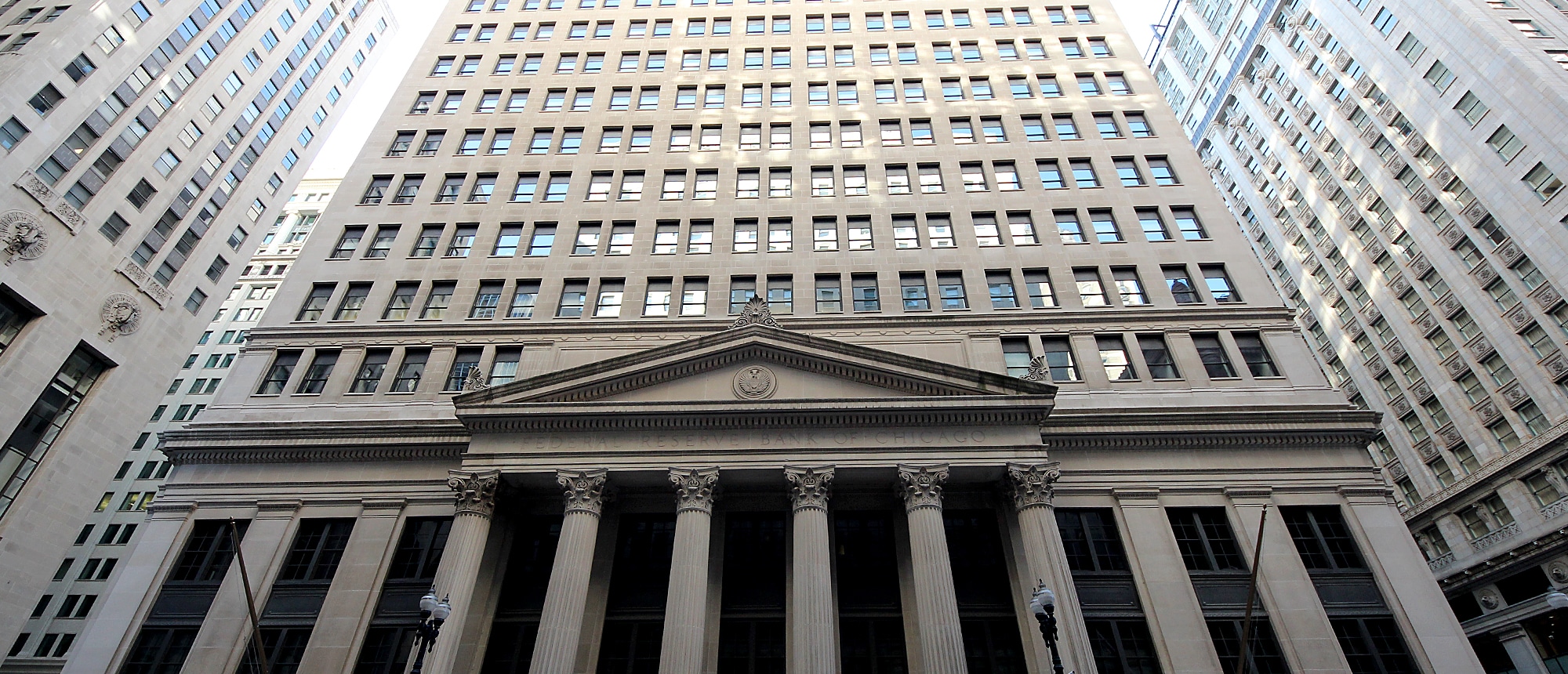Use Fiscal Policy, Not The Fed, To Fight The Next Slump
This economic recovery is looking long in the tooth. It’s already the third longest U.S. expansion on record, and many observers are worried about what will happen when this phase of the cycle is over and the country falls into recession. That’s unavoidable, of course, so it makes sense to think ahead about what policy-makers should do to fight the next downturn. Don’t think a fiscal response is off the table.
Normally in a recession, everyone expects the Federal Reserve to handle the situation. That’s because, in 1977, Congress effectively shifted the burden of maintaining a good economy — defined as one that delivers “maximum sustainable growth” with modest inflation — onto the central bank. When the economy goes sour, the dual mandate requires the Fed to fix it.
Prior to the Great Recession, the Fed had a straightforward way of fighting recessions: It dropped its short-term interest rate until things improved. That might mean a few substantial cuts or a series of smaller reductions that cumulatively total 4 percentage points or more. Eventually, the theory goes, credit gets cheap enough that businesses and consumers can be enticed to borrow and spend enough to counteract whatever had dragged the economy down.
There’s just one problem (actually, there are two, but I’ll save discussion of the other for another day). The Fed’s target rate is now 1.25 percent to 1.5 percent. Even if the Fed tightens three or four times by the end of the year, as many expect, it would put rates between 2 percent and 2.5 percent. That doesn’t leave much conventional ammunition in the event of a meltdown.
Matthew C. Klein, at the Financial Times, neatly captures this concern.
“It’s not difficult to imagine the US economy tipping into recession by the early 2020s, if not before. Monetary tightening has already squashed the difference between short-term and long-term interest rates to its narrowest level since the start of the financial crisis. Federal Reserve officials forecast slower growth and higher joblessness over the next few years from further interest rate increases. The danger is that the tools used to fight the last downturn may be insufficient next time around. Investors should prepare for some radical innovations.”
So let’s suppose he’s right, and the next recession hits before the Fed has raised rates high enough to be able to cut them enough to fight the slowdown in the usual way. What then?
In 2016, then Fed Chair Janet Yellen talked about this at the Fed’s annual convening in Jackson Hole, Wyoming. She basically argued that the Fed could deal with any future recession, even without the space to cut interest rates by 4 percentage points or more. In a pinch, she insisted, the Fed could always return to unconventional policy. In other words, we got this.
She spoke, not of “radical innovations” but of becoming creative in ways “that have been employed by other central banks.” Instead of restricting themselves to buying mortgage-backed securities and U.S. Treasuries, “future policy-makers may wish to explore the possibility of purchasing a broader range of assets,” she said. That might mean following the lead of the European Central Bank or the Bank of Japan, which have purchased corporate bonds, stocks, real estate investment trusts and securitized small-business loans as part of their expanded quantitative easing programs. Who knows, maybe the Fed would even consider emulating other banks’ negative interest rate policies or targeting nominal gross domestic product as part of the new toolkit.
I, for one, hope we can avoid relying on the Fed to get creative when the next crisis hits. As former Fed Chairman Ben Bernanke explained, “unconventional monetary policies come with possible risks and costs,” and monetary policy “is not a panacea.” But what else is there?
Fiscal policy, of course!
The problem is, there’s a growing perception that we’re going to find ourselves up recession creek without a fiscal paddle. It’s an argument that former Treasury Secretary Jack Lew made last week during an interview on CNBC:
“If we had a crisis right now whether a financial crisis or a business cycle recession, we don’t have the fiscal policy to respond or the monetary policy. It’s quite scary… We now don’t have a fiscal arsenal because we spent it on the tax cut and on the spending agreement. We’ve kind of spent the fiscal resources.”
He’s not alone. One of his predecessors, Larry Summers, has also complained that the tax cuts have seized valuable fiscal real estate. But Summers’ assessment is even more alarmist than Lew’s:
“Our country will be living on a shoestring for decades because of the increases in the deficits that will result. This is a serious threat to our national security because of what it will mean over time for our ability to fund national defense.”
This kind of rhetoric worries me for at least a couple of reasons. First, the tax cuts didn’t weld the fiscal door shut. There’s nothing to prevent lawmakers (in this Congress or any other) from voting for legislation that will further expand budget deficits. It’s purely a political choice, as Summers surely knows. What he must mean, then, is that Americans are so turned off by deficits that future lawmakers won’t have the courage to vote to protect our economy or our nation. (In that case, be thankful for the automatic stabilizers.)
Second, what happens if the “blue wave” continues, and Democrats end up controlling one or both houses of Congress, along with the White House in 2020? Are they supposed to govern as if reducing the budget deficit is the great legislative challenge of our time? Or should they learn a little something from the Republican Party, namely that voters really don’t seem to care all that much about deficits, so it’s better to stay focused on delivering your agenda?
The fiscal paddle isn’t broken, but the policy narrative is.

